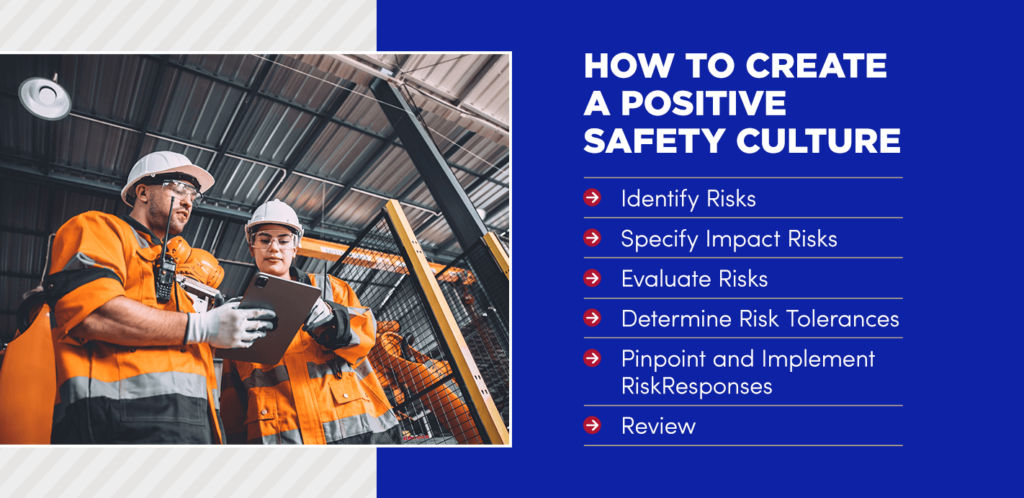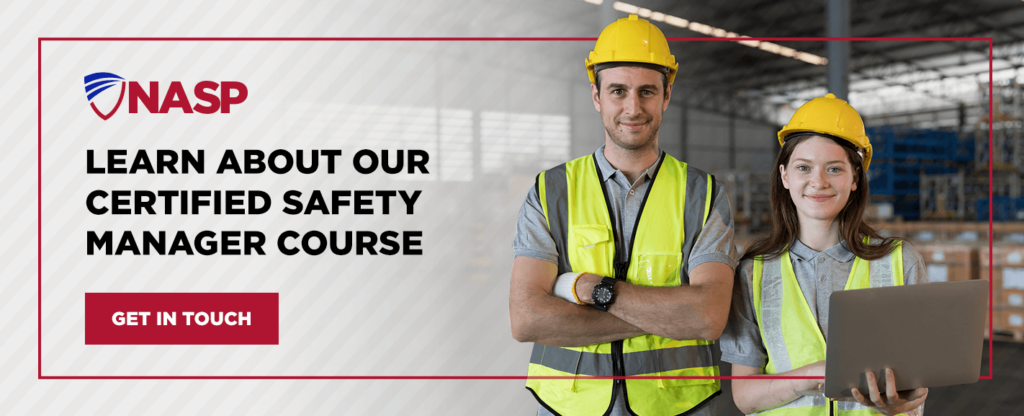How to Assess and Prioritize Risks in the Workplace

As a safety manager, you understand that identifying and preparing for risks is crucial to maintaining a safe, productive work environment. Every workplace presents different risks, and organizations prioritize them differently, too. Therefore, having a targeted, detailed approach for your facility is paramount.
Learn key tips on how to assess and prioritize risks in the workplace in our guide.
Understanding Risk Assessment and Prioritization
A risk assessment involves identifying potential hazards within the workplace. Once hazards are discovered, teams must determine how likely they are to occur and their severity. Then, they prioritize the risks they’ve found according to which ones the organization wants to mitigate first. This risk prioritization plan guides teams through remediating each risk.
Risk assessment and prioritization goals vary in different industries, but the central goal overall is to prepare for and manage risk. Keeping employees, customers, and other people in the workplace safe is the foundation. Whether a facility is concerned about toxic chemical handling or falls from height, teams can create a plan for a safer work environment.
How to Conduct a Risk Assessment
Before conducting your risk assessment, you’ll want to prepare by thinking through some necessary considerations:
- Assessment scope: Look at what you want your risk assessment to encompass. What processes, activities, and locations will it cover? Create a detailed outline centered on the assessment’s scope to determine the resources, time, and budget you’ll require to complete it. Depending on your industry, certain regulations and guidelines, such as OSHA safety standards, will likely also play a role in how you lay out and conduct your assessment.
- Resources and budget: Developing, implementing, and overseeing your risk assessment plan will require various resources. How much money do you want to allocate to your plan? What about your time investment? A team of dedicated personnel will also be necessary for management purposes.
- Assessment team: Note all stakeholders who will be involved in risk assessment. Identify senior team members and other higher-ups who you’ll need to update throughout every assessment. Additionally, you’ll need to put together a specific assessment team. These individuals might be risk managers, team leaders, and subject matter experts.
After you’ve prepared for your risk assessment and defined your approach, you can start assessing risks in the workplace. Choose a documentation method, such as flow charts or spreadsheets, to outline your findings. A typical risk assessment framework is as follows:
1. Identify Risks
Evaluate your workplace’s current processes and approaches to locate risks that may impact your employees, customers, and place of business. All aspects of work, both on-site and remote, as well as routine activities like maintenance, should be reviewed for risks.
Some common workplace risks include natural disasters, workplace accidents, biological and chemical hazards, technological hazards, and supply chain interruptions. Other risks, such as psychological and social hazards for workers, may not be immediately visible but must also be considered.
2. Specify Risk Impacts
How could your team, clientele, and overall business be impacted by the risks you’ve found? Who will be harmed by specific risks? What are the possible different outcomes should a certain risk occur? Note these details for all risks you identify. It can also be beneficial to look at past risks and hazards.
3. Evaluate Risks
Assess each risk and its variables. What’s the likelihood of the risk? How severe are the consequences if the risk occurs? Understanding how to prioritize risks in the workplace will be a necessary part of your approach. This evaluation will also help you determine where and how risks can be mitigated.
4. Determine Risk Tolerances
Every workplace exhibits risks, and some of them are unavoidable. What’s the level of risk your company is willing to accept to meet its objectives? For example, heavy machinery can fail and potentially lead to safety issues. However, that equipment may be necessary for your operations, and the risk of failure is one you must accept. By understanding your risk tolerances, you can take steps to mitigate risk outcomes as much as possible.
5. Pinpoint and Implement Risk Responses
Once you’ve completed the steps above, you can map out your plans to address and mitigate each risk. The approach you take for each risk will depend on your unique organization and potential risk outcomes. For example, if you’ve identified a risk with the storage and handling of chemicals based on your facility’s layout, you’ll need to create a targeted response that works within your space.
When your assessment team has revised and finalized your risk response plans, share them with the rest of your organization. The assessment and plan you’ve created should be written down and easily accessible by all team members. Include information on all identified hazards, affected individuals, and mitigation steps.
Now, you can take action to address the risks and build a safer workplace. Be sure to document all your work to control and manage risks, decrease risks to the lowest acceptable tolerance level, and keep your team involved every step of the way. This document will be essential for compliance purposes and future risk assessment plan updates.
6. Review
Over time, your company will evolve, and new risks will be present. Whether you’re introducing a new service offering or implementing a new type of equipment, your risk assessment team will need to reevaluate your risk assessment approach and make sure all new risks are accounted for and addressed. Think of risk assessment as a continuous process.

Strategies for Risk Prioritization
How do you determine which risks require the most attention? Many factors are part of risk prioritization, including risk severity, tolerance, and manageability. Generally, you’ll start by identifying the different levels of risks in your workplace. Rank the risks as follows — tolerable risks, low risks, high risks, and intolerable risks.
Then, you can determine the best path forward for mitigating risks. Many strategies exist for risk prioritization and management. Depending on your specific company and available resources, some may be more viable than others:
- Severity: Addressing risks by severity goes hand in hand with your risk levels — the more intolerable the risk, the sooner you’ll handle it. This approach also considers probability. A risk that’s likelier to occur and will have considerable impacts should be prioritized.
- Cost: In some cases, organizations won’t have the necessary resources to address all risks. When budget is a concern, prioritizing risks based on how much financial impact they’ll have can be a starting point. Tackling the risks with the most expensive outcomes first can put the organization in a better position to target lower-cost risks later.
- Manageability: How manageable are the risks you’re looking at? One way to prioritize risks is by taking care of the most unmanageable — and, therefore, most impactful — risks first. A risk that’s easier to manage and less likely to occur may be placed further down the list.
These examples are just a few approaches you can take for prioritizing risks in the workplace. Work with your company’s stakeholders and the assessment team to determine the best prioritization strategy for your operations. As risks evolve, you may find that changing your prioritization approach makes sense, so remain flexible, too.
Learn About Our Certified Safety Manager Course
As you navigate how to assess risks in the workplace, ongoing training is essential. Properly identifying, addressing, and managing risks requires extensive knowledge and expertise, and safety managers heading up their organizations’ risk assessment programs can always benefit from further learning.
The National Association of Safety Professionals offers comprehensive workplace safety training programs for individuals in many industries. Through our Certified Safety Manager course, you’ll learn extensive safety management skills, covering topics such as safety management systems, occupational health and safety plan development, and incident analysis.
Learn more about our certificate program today. Have any questions? Get in touch with us!

Related Posts




